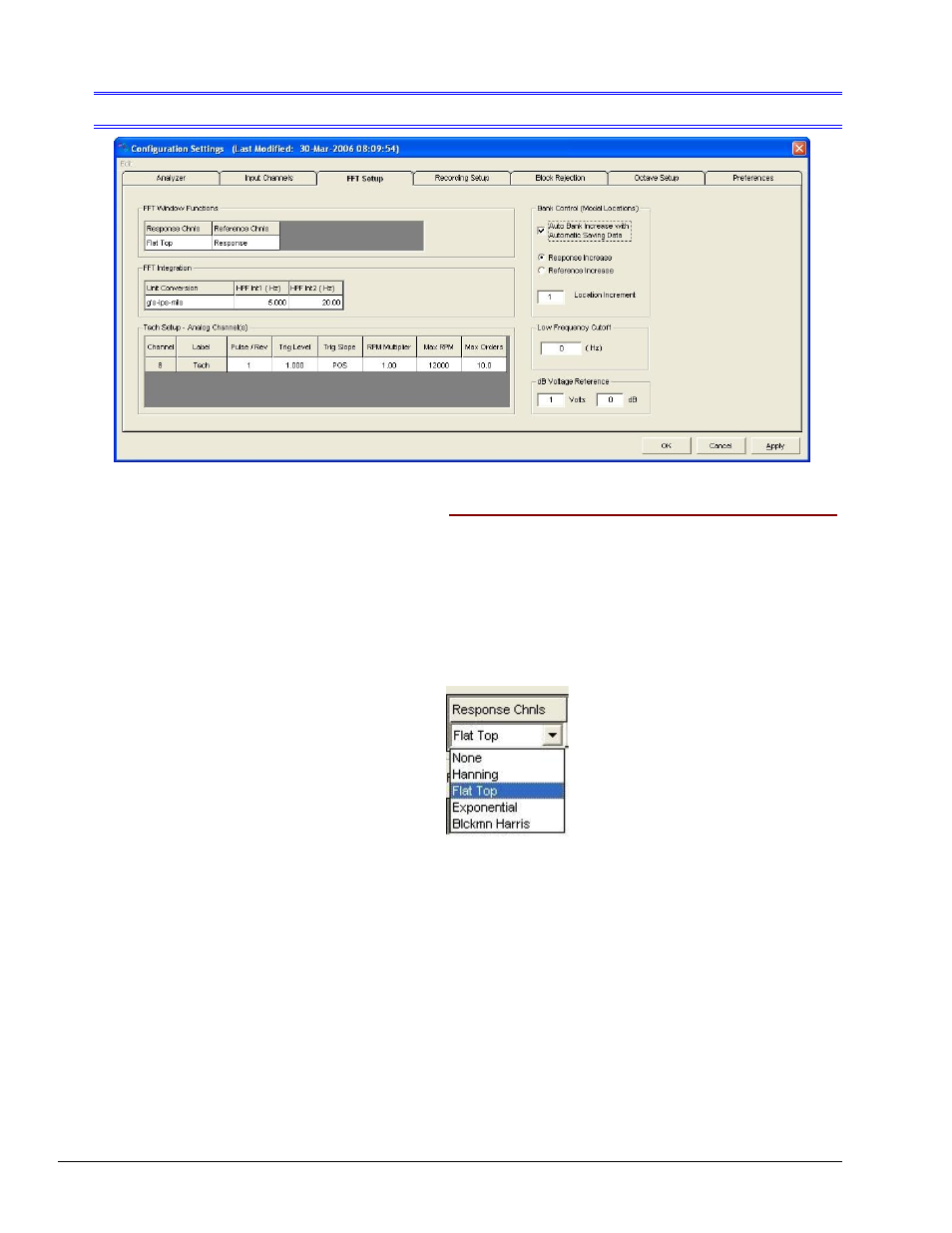Fft setup tab, Configuration – Measurement Computing eZ-Analyst rev.14.1 User Manual
Page 58

4-22 Edit Menu
978791
eZ-Analyst
Edit Menu
> Configuration >
FFT Setup Tab
FFT Setup Tab
Edit Menu > Configuration >
FFT Setup Tab:
FFT Window Functions / Response Channels
The FFT (Response) window is a time-domain, weighting window. A response window is
usually applied to data to reduce FFT leakage errors. FFT theory assumes that the signal
being analyzed is periodic in the data acquisition block. When this is not the case, energy
from a signal at a specified frequency can leak into nearby spectral bins causing spectral
amplitude inaccuracies. Applying a windowing function controls, but doesn’t completely
eliminate, the error by multiplying each data frame by a suitable time-domain weighting
window. This calculation reduces the amplitude/magnitude of the data near the ends of each
data frame prior to performing the FFT and forces the data to be nearly periodic in the
window, thus reducing leakage errors. Response window options are as follows:
FFT Window Functions, Response Channels Pull-down List
None:
No weighting window is applied.
Hanning:
The Hanning window is typically used to analyze continuous signals. It offers
a reasonable trade-off of frequency accuracy versus amplitude accuracy.
FlatTop:
Compared to the very similar 4-term “Max Flat Top,” this window also has a
very low peak amplitude error, and its frequency resolution is somewhat
better. Its side lobes are considerably higher. Its effective noise bandwidth is
still almost twice that of the Hanning window, therefore this window is used
mainly to measure accurate peak amplitudes of discrete spectral components
that are known to be separated by several spectral lines.
